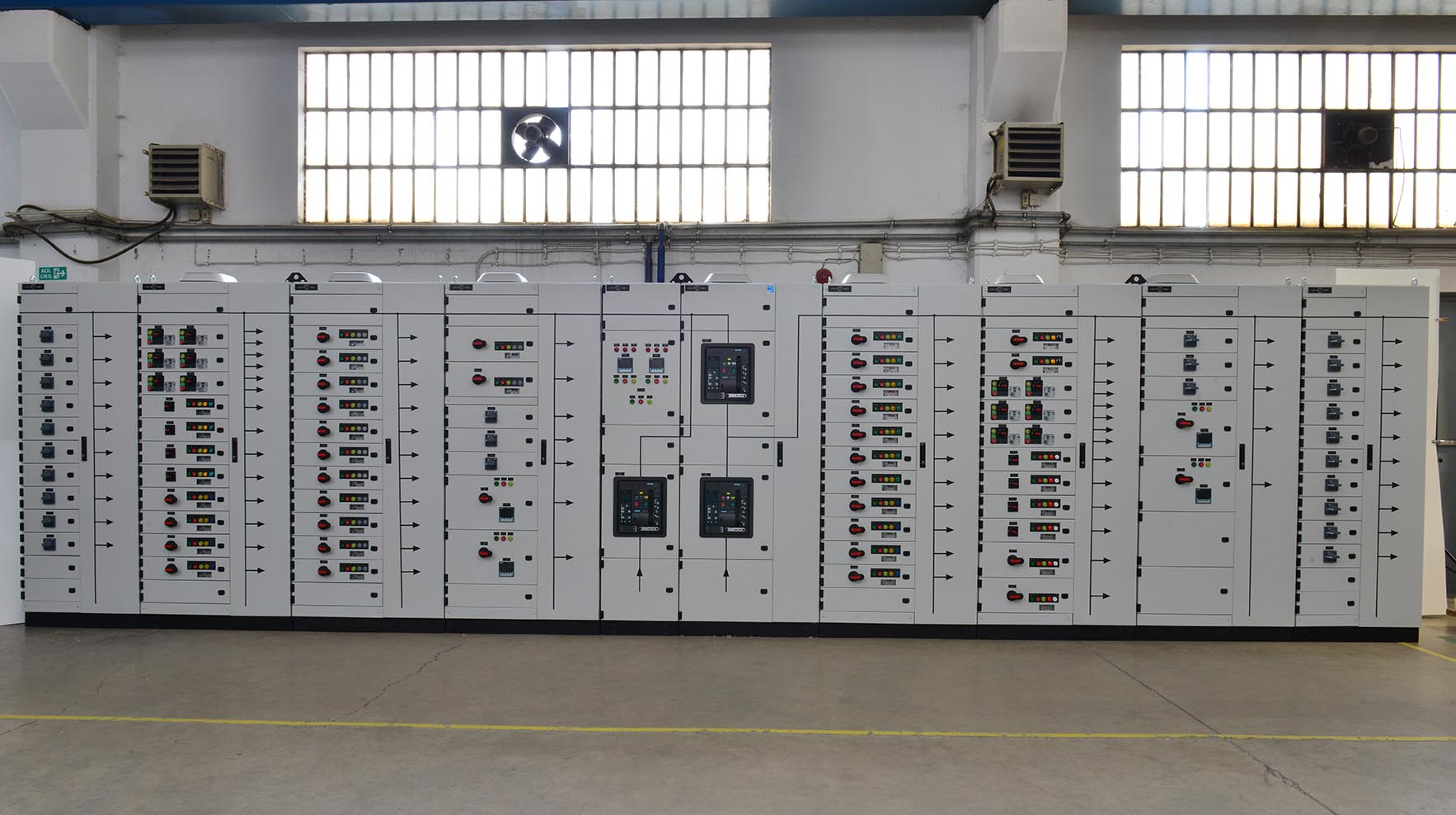
MCC panels control motors, pumps, and fans either automatically or manually, both remotely and locally. The term MCC comes from the abbreviation of Motion Control Chart, which in Turkish means “Motion Control Systems Programming Technique.”
These panels are widely used today in many facilities for multiple motor drives. In building automation systems, they are often managed together with DDC panels. This allows them to operate motors both manually and automatically.
MCC panels are manufactured by assembling one or more metal enclosures. They are commonly designed to control 3-phase AC motors within the operating range of 200V–600V. For each motor control, the following core components are typically included:
- Contactor
- Motor protection switch
- Fuses
- Load breaker switch for motor circuit isolation
In addition, MCC panels also contain the necessary equipment for the main power supply units and control sections. They provide infrastructure for PLC, centralized automation, and SCADA systems. They also protect motors and all electrical devices on site against sudden voltage drops or surges automatically.
What Are the Components of MCC Panels?
The contactor in MCC panels is used to switch the electrical power circuit. It is an electrically controlled switch that helps save energy by operating with very little power. Unlike general-purpose relays, contactors are designed to directly connect to high-current load devices. They consist of three main elements: contacts, power contacts, auxiliary contacts, and contact springs.
The motor protection switch in MCC panels protects electric motors against overload currents, short circuits, and phase failures. It also allows manual connection and disconnection of the motor, acting as both a control and protection device. This helps prevent damage to the motor circuit.
Features of MCC Panels
In terms of features, MCC panels include the equipment necessary for both main power supply and control. Technical features include:
- Contain motor control and command devices such as motor drivers, phase protection relays, motor protection switches, main switches, and contactors.
- Serve as panels where electricity is connected or disconnected in the mechanical system.
- Monitored and controlled through automation systems.
These panels are designed to be compatible with automation. If controlled together with DDC panels, their main features include:
- Integration with automation devices such as PLCs, control cards, and terminal blocks.
- Performing monitoring and control tasks for automation systems.
- Known as automation panels, MCC panels can be monitored and managed through them.
- Collecting data from sensors, interpreting it, and sending it to computers. Commands can also be sent from the panel to mechanical devices.
For this reason, MCC panels and DDC panels are completely different, though they can work together.
What Is a DDC Panel?
If MCC panels are used in building automation, they are operated alongside DDC panels. DDC, short for Direct Digital Control, groups control units when multiple systems need to be managed. These panels oversee MCC panels and ensure control of field devices such as fan motors, exhaust motors, circulation pumps, and booster systems.
Programs installed in PLCs or DDC control units within the DDC panel interact with SCADA software connected to the system. They monitor and manage data including:
- Heating and cooling system data of buildings
- Pump and burner information in boiler and machine rooms
- Sensor data such as temperature, humidity, pressure, and flow
Using this data, the DDC panel controls field devices as programmed, ensuring efficient energy use and eliminating unnecessary consumption.
How Do MCC and DDC Panels Communicate?
MCC and DDC panels communicate using different protocols, including ModBus, CanBus, FieldBus, Profibus, DeviceNet, ControlNet, AS-i, or Hart. Typically, LIHCH cables are used between the two panels.
When a command is sent from the automation computer, it reaches the DDC panel, which then transmits it to the MCC panel via its control card, allowing the motor to start or stop. Mechanical devices may also have sensors generating analog or digital signals such as temperature, humidity, or pressure. These are read by cards within the DDC panel and transferred to the automation computer, where alerts can be generated. Mechanical devices can also be manually controlled from the MCC panel, with emergency stop buttons provided for safety.
Where Are MCC Panels Used?
MCC panels have a wide range of applications. Common usage areas include:
- Shopping centers
- Factories
- Smart buildings
- Treatment plants
- Pump stations
- Transportation facilities
In addition, MCC panels are used in any environment where motor usage is intensive, making them an essential solution for modern industrial and commercial facilities.


Leave A Comment
You must be <a href="https://epron.com.tr/wp-login.php?redirect_to=https%3A%2F%2Fepron.com.tr%2Fen%2Fmcc-panels%2F">logged in</a> to post a comment.